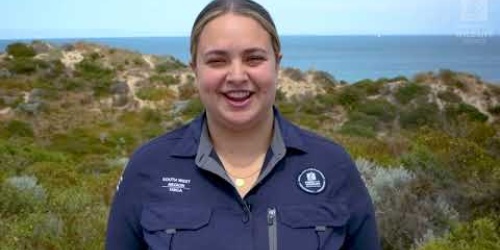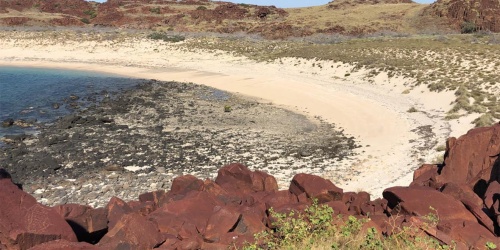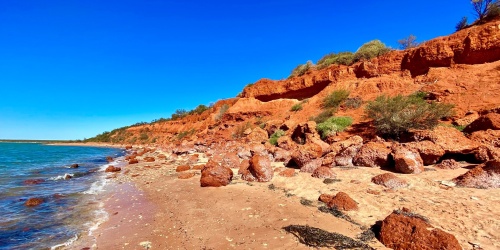
Traditional Owners and DBCA staff at the first Nyinggulu Joint Management Body Meeting in Exmouth in May 2019
Joint management of WA's natural areas with Traditional Owners has many benefits - for the land and sea, the groups involved, and DBCA. More profiles of joint management partners will be added as they are developed and approved by relevant Traditional Owners.
Yawuru Native Title Holders Aboriginal Corporation
Yawuru Native Title Holders Aboriginal Corporation jointly manages Yawuru Birragun Conservation Park, Guniyan Binba Conservation Park, Yawuru Minyirr Buru Conservation Park and Yawuru Nagulagun/Roebuck Bay Marine Park.
“The Yawuru story is one of resilience and pride. We recognise all the old people who carried the stories from Bugarrigarra, walked our lands, fished and hunted and survived from the water places… We owe the benefits of today to our senior people who have gone before us… The Yawuru people have managed our Country, including our waters, and cared for our society from time immemorial.”
Mabu liyan - Mabu (good) liyan expresses Yawuru emotional strength, dignity and pride. The guiding principle for good management of Yawuru Country is that Yawuru people have to maintain good, clear liyan with the Country within the modern, ever-changing world. To ensure Yawuru people can keep mabu liyan we have to:
- Visit Country
- Respect spirits abiding in Country
- Continue cultural traditions
- Respect Bugarrigarra (the Dreaming).
Joint management - The Yawuru Conservation Estate comprises four different parks, managed holistically and collaboratively by the Yawuru joint management team at DBCA under the direction of two joint management bodies (JMBs), marine and terrestrial. The JMBs comprise the Yawuru Native Title Holders Aboriginal Corporation RNTBC, DBCA and (for terrestrial conservation parks) the Shire of Broome. The four parks are:
- Guniyan Binba Conservation Park; intertidal area of north Cable Beach and Willie Creek
- Yawuru Birragun Conservation Park; lands adjacent to Willie Creek and Roebuck Bay
- Yawuru Minyirr Buru Conservation Park; lands within Broome townsite including Minyirr Park
- Yawuru Nagulagun/ Roebuck Bay Marine Park; intertidal and subtidal areas of Roebuck Bay.

Jason Fong, Yawuru ranger at Wirrjinirr (Willie Creek)
Bunuba Dawangarri Aboriginal Corporation
Bunuba Dawangarri Aboriginal Corporation jointly manages Dimalurru National Park, Balili Conservation Park, Jungiwa Conservation Park, Danggu Conservation Park, Danggu National Park, Miluwindi Conservation Park and Bandilngan National Park.
Ngindaji yarrangi Muwayi
This is our Country.
Winamu nhingi, balili, galanganyja, walibirri, mundru, jumurrurru, girrwilyi, gulwula, maduwarra. Muwayi ingga gurrijinagi jurali nhingi. Ngirriyani dawangarri nhir.
From the sandstone ranges to the ancient limestone reef and across the vast black soil plains, our Country is the creeks, the ridges, the springs, the seasonal billabongs, our living water places and our mighty river. This Country has looked after us from a long time ago, and we are the people who belong to it.
Thirrili ngarri wilawarra muwayi.u
We speak strong for Country.
Thirrili ngarri wilawarra muwayi.u
We stand strong for Country.
Ngindaji thangani ngarranggani.nhi bagari, yarringga, burrudi ganbarra.
These are the words from creation time we must follow. Country teaches us everything about it and everything about us
Muwayi ingga binarri yara yarrangi ganinyi ngarri gandanday, biyirri ingga binarri yawurrma ngirri yani.
Country taught the first Old People and the Old People taught us.
Ngindaji ngiyirranggu thangani muwayi.u
This is our language, our knowledge, our word, and our story for Country
Words by June Oscar, Selina Middleton and Penny Purdie
Country is woven through a delicate tapestry of relationships. We are connected to our non-human relatives through our skin names. We have an obligation to look after them, to speak for them, and to protect them. Bound through our reciprocal relationships, we need our non-human relatives to be plentiful and healthy. To do this we have responsibilities to Country so that it will provide for them and enable them to regrow and regenerate.
Bunuba society holds sophisticated knowledge of Country that has been built up over the millennia. We are responsible for the wellbeing of Country. When we are not doing our part, Country gets sick, but Country is capable of healing. For this reason, it is important that we are on Country to share and teach our young people the knowledge of Bunuba and their responsibilities for Country.
Over generations of Bunuba people, we have worked with so many different specialists and interested parties – archaeologists, historians, ecologists, botanists and more. These partnerships are all part of Bunuba’s vision, as we take stock of what Country holds and the ways in which we can protect this. Across Bunuba and Western knowledge systems, we work together as one. We learn from each other how to look after Country in both worlds. As Western practices and conservation techniques teach us other ways of looking after Country, it is important that our partners learn about Country and the intrinsic values it holds through the knowledge of Bunuba.
Our joint management partnership with DBCA is the opportunity for Bunuba to be involved in a significant way in the operation of the national and conservation parks here on Bunuba Country. This is something that we have never been a part of before. Decades ago, when these parks were first established, it was the Government’s aspirations to establish and promote iconic sites within the traditional lands of Bunuba. But these decisions were made without the voice and guidance of our people.
Jointly managing our parks, means that we are protecting our voices and establishing ourselves as equals in the decision making and management of our Country. Our agreement with DBCA is critical in reclaiming the true identity of Country and ourselves. All of our knowledge is contained within Country and through our stories of our places we learn how these sites fit into the story of Bunuba Country and our people. We believe that all people need to know the right story of these places.
Through our parks we can share these stories across generations of visitors. But our partnerships offer more than just tourism opportunities, as conjointly we have many things to look after. Our trees, grasses and plants; our birds, fishes, reptiles and mammals – working together Country flourishes under our care. As we expand the reach of our parks, we are also safeguarding places of great significance – rock art, living places, burial sites and sacred areas. All of these sites are of great importance and must remain protected as part of our obligations to Country.
Our partnership itself is also something that we have to nurture and develop together. There are ebbs and flows as we stretch across knowledge systems and try to strike a balance between the obligations of our two worlds. This growing association has formed a new seam in the interwoven fabric of Bunuba Country. As partners we are all responsible for keeping this relationship strong and healthy. But we are committed to this, as we are excited by the opportunities that our joint management Agreement with DBCA brings to both parties. As we learn and evolve together, we create new stories that speak beyond the shared future of Bunuba and DBCA. The experiences and knowledge that we are creating together, sits as an example of innovative partnerships from which our fellow countrymen and all other land managers across the nation can learn and be inspired.

Yuwulurru (Lennard Gorge). Photo by David Bettini
Balanggarra Aboriginal Corporation
Balanggarra Aboriginal Corporation jointly manages North Kimberley Marine Park (Balanggarra part), Lesueur Island Nature Reserve, Niiwalarra Islands (Sir Graham Moore Islands) National Park.
We, the Balanggarra People, want to look after our Country. To keep Balanggarra Country healthy and deal with the threats to our Country.
Our Balanggarra law and culture gives us the rules and responsibilities for looking after Balanggarra culture, plants, animals, people and Country.
We are looking after our Country in the way that our old people did for many thousands of years.
We want to bring together our traditional ways of looking after Country with western ways.
We want to keep our culture, language and law alive, protected and recognised. And we want to speak for our Country, decide for our Country and control access to our Country.
Balanggarra People are Saltwater People and Mangkuru manya (marine turtles), abil (dugong), yinga (dolphin) and wirriyal (saltwater crocodiles) are important for us to look after on our own, because these animals move around along our coastline and into our neighbour’s Country.

North Kimberley Marine Park. Photo by Ben Broady Photography
Yawoorroong Miriuwung Gajerrong Yirrgeb Noong Dawang (MG) Corporation
MG Corporation jointly manages Mijing Conservation Park, Darrmalanka Conservation Park, Goomig Conservation Park, Barrbem Conservation Park, Darram Conservation Park, Ngamoowalem Conservation Park.
We, the Miriuwung and Gajerrong people, have been living on this land for a long time. We have been looking after it and the Country has given us food and water. We know each place by name since creation time, which we call Ngarranggarni, the Dreaming.
Our Dreamings became different features of our landscape, and are still present in our Country today. Every part of our Country has a song. Our Dreamings make connections between our people, plants, animals and parts of our Country like water holes, creeks, hills, mountains and tracks through our Country. Yarndungarll (dingo), lemoogeng (blue-tongue lizard), diwanang and jalareng (wedge-tailed eagle and egret), bilbiljing (grass-hopper) goorrgoorrjing (tawny frog-mouth owl) and gerdan (frill necked lizard) are some of the Dreaming stories and places on our Country.
Dambimangari Aboriginal Corporation
Dambimangari Aboriginal Corporation jointly manages Lalang-gaddam marine park (previously Lalang-garram/Camden Sound Marine Park Class A, Lalang-garram/Horizontal Falls Marine Park Class A, North Lalang-garram Marine Park Class A and Maiyalam Marine Park).
Aardbulaardoo Ngaieye (welcome everyone) to the Lalang-gaddam Marine Park, part of Dambeemangarddee Country.
In our language, dambeema means home, Dambeemangarddee means all the people who are from that home. Dambeemangarddee people is a title that has in recent times been used when discussing the Dambeemangarddee native title holders. Our culture goes back more than 56,000 years, Dambeemangarddee as our collective title, goes back less than twenty. The name of our tribe and language is Worrdorrda.
We honour our old people from the Wanjina Wunggurr Dambeemangarddee, Wanjina Wunggurr Wilingin and Wanjina Wunggurr Uunguu who stood strong in our fight for native title. We remember the strength of our ancestors who passed their traditional knowledge on to us, fought for our rights and laid the foundation for our generation to look after our Country in traditional and modern ways.
Please take care in Dambeemangarddee Country, respect the environment and respect the culture when you spend time in the Lalang-gaddam Marine Park
Dambeemangarddee Country is divided into nine clan areas. Currently, there are few Dambeemangarddee Traditional Owners who are able to live full time on their traditional lands, however families and individuals still retain close personal connections with their Country and visit regularly for day trips and camping as well as semi-permanent residence at remote outstations such as Yaloon (Cone Bay). The Dambimangari Indigenous Ranger Program undertakes marine operations on their ranger vessel, Manambadda. They are a regular presence in the Lalang-gaddam Marine Park, undertaking a range of land and sea management projects, such as surveying for exotic marine pests and weeding and cleaning up land areas.
Joint management
A joint management partnership is in place with the Department of Biodiversity, Conservation and Attractions; Parks and Wildlife Service. Through joint management, Dambeemangarddee cultural rights and responsibilities are formally recognised, with opportunities being created for Dambeemangarddee people to live and work on Country.
The partnership enhances the protection of cultural heritage and values, conserves the values of the marine parks, and provides strategic direction for parks management, operational, and on-ground activities.
“Our community has a strong vision for looking after our Country. We want to make sure our traditional knowledge is alive and strong and that all plants, animals and cultural sites are looked after.”
“Dambeemangarddee Country is very special. There are not many places in the world where most of the animals remain as they were thousands of years ago. All the animals have their own songs and stories; some have their images in caves or in stone arrangements. The old people from long ago knew the songs and also created new ones from meeting their ancestors in their dreams.”
“The Unggudja life force is the essence of all living things- including Wandjina, humans, animals and plants- and it permeates the land and the sea, including the mountains, rivers and stone formations that characterise the topography of the Country. Unggudja also refers to the ‘child-spirits’ that men ‘find’ in a dream and then pass to their wives in a further dream before a child can be born. These child=spirits generally take the form of an animal, a plant, a substance such as honey or wax, or in some cases an inanimate object”
“It is our cultural responsibility to visit all these important places regularly to check that they haven’t been disturbed and are still healthy. We believe it gives happiness and comfort to our ancestors’ spirits by visiting, working, protecting, and living on the land. It also reconnects us to that Country. Living and breathing on Country gives life and life is health.”

Ngumbree (Raft Point). Photo by Ellen D’Cruz/DBCA
Mayala Inninalang Aboriginal Corporation
Mayala Inninalang Aboriginal Corporation jointly manages Mayala Marine Park
Balab jiya aarrood ngan jaard booroo - Welcome to Country
We ask that you, as a visitor or partner, have wiini (respect) for Mayala people, Country, culture and protocols. Your wiini is the backbone to help support our vision to look after and use Country sustainably so Country is always alive, healthy and rich for current and future generations to enjoy.
Mayala are true saltwater people who have a unique island culture. Like their ancestors, they continue to use both bush and sea resources within their Country. Mayala Baaliboor (Mayala Country) comprises all the islands, the sea, submerged lands, seabeds and saltwater. Mayala Baaliboor is rich, alive and healthy.

On-Country joint planning trip. Photo by Michael Higgins/DBCA
Karajarri Traditional Lands Association RNTBC
Karajarri Traditional Lands Association RNTBC jointly manages Eighty Mile Beach Marine Park (Karajarri part), Jinmarnkur Conservation Park, Jinmarnkur Kulja Nature Reserve, Walyarta Conservation Park (Karajarri part) and Kurriji Pa Yajula (Dragon Tree Soak) Nature Reserve.
Learn more about these parks and reserves:
- Eighty Mile Beach Marine Park Management Plan 2014-2024
- Parks and Reserves of the South-West Kimberley and North-West Pilbara Joint Management Plan 2019
The Karajarri people’s native title determination is located at the northern end of Eighty Mile Beach Marine Park, and extends inland to the Great Sandy Desert.
Ancestral beings from ‘The Dreaming’ created the physical environment: the land, sea, sand dunes, freshwater springs, rivers and creeks. At the same time, these ancestral beings also created the law, culture and language.
“As the pukjarrijarra (Karajarri ancestral beings) travelled through the country around the marine park area they changed from speaking Nyangumarta to Karajarri and, as they continued north through Karajarri country, they gave names to everything in the sea and on the land. Therefore, traditionally there are a number of places where the Nyangumarta country overlapped with Karajarri country.”
In such areas, the Nyangumarta and Karajarri share rights to resources including access to fishing and freshwater sites, and to camping spots. For these reasons, decision making in the adjacent marine, coastal and terrestrial reserves where the language groups overlap requires consultation with both Nyangumarta and Karajarri elders.
Joint management
A collaborative approach between the Department of Biodiversity, Conservation and Attractions, and the Karajarri people enables the continuation of caring for country and keeping culture strong.
The management plan ensures a strong working partnership between DBCA and the Karajarri people, allowing them to make decisions that align with their cultural values and aspirations within the marine park and terrestrial reserves.
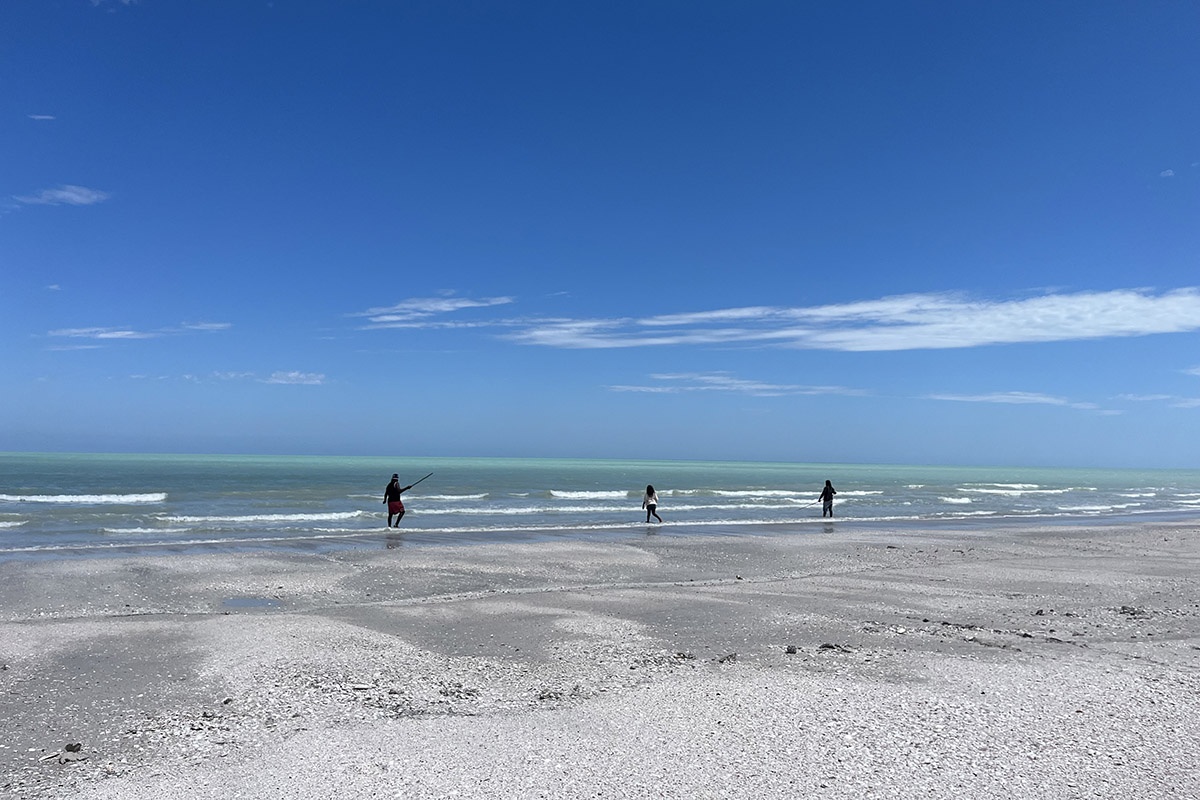
Karajarri people fishing at Eighty Mile Beach. Photo by Karajarri Traditional Lands Association
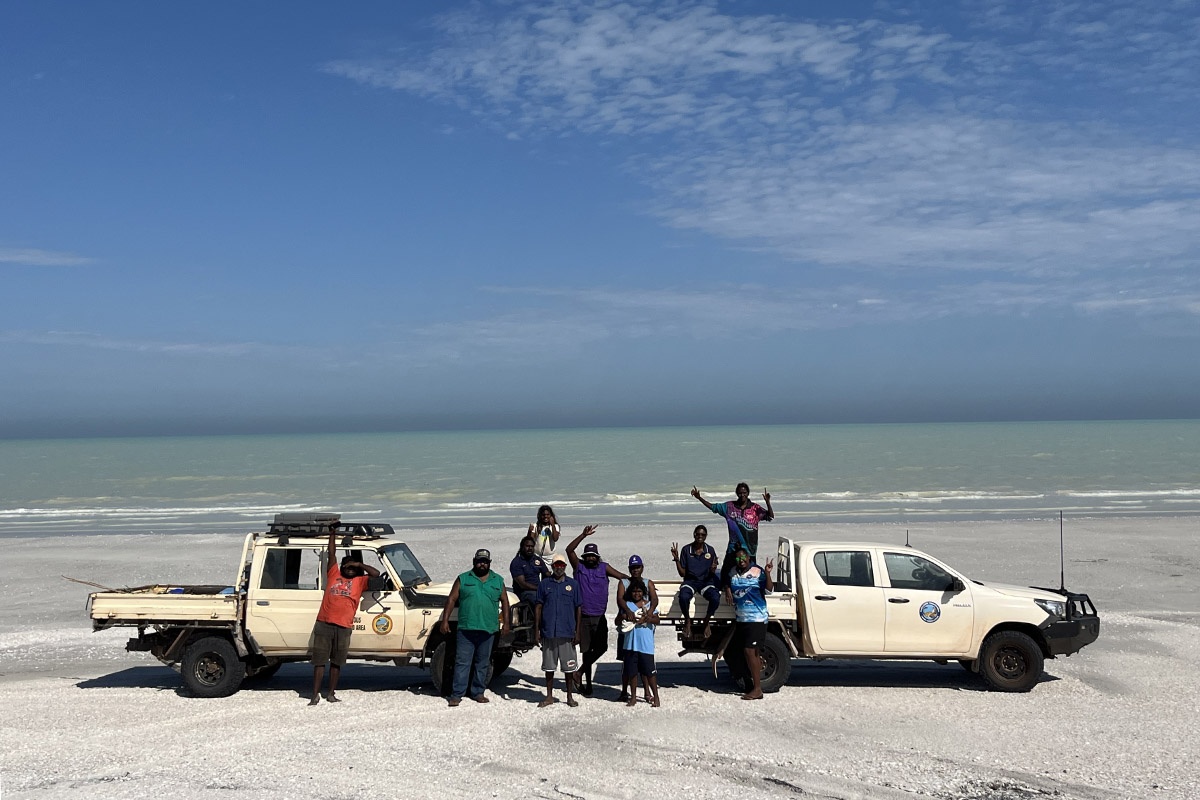
Karajarri Rangers at Eighty Mile Beach. Photo by Karajarri Traditional Lands Association
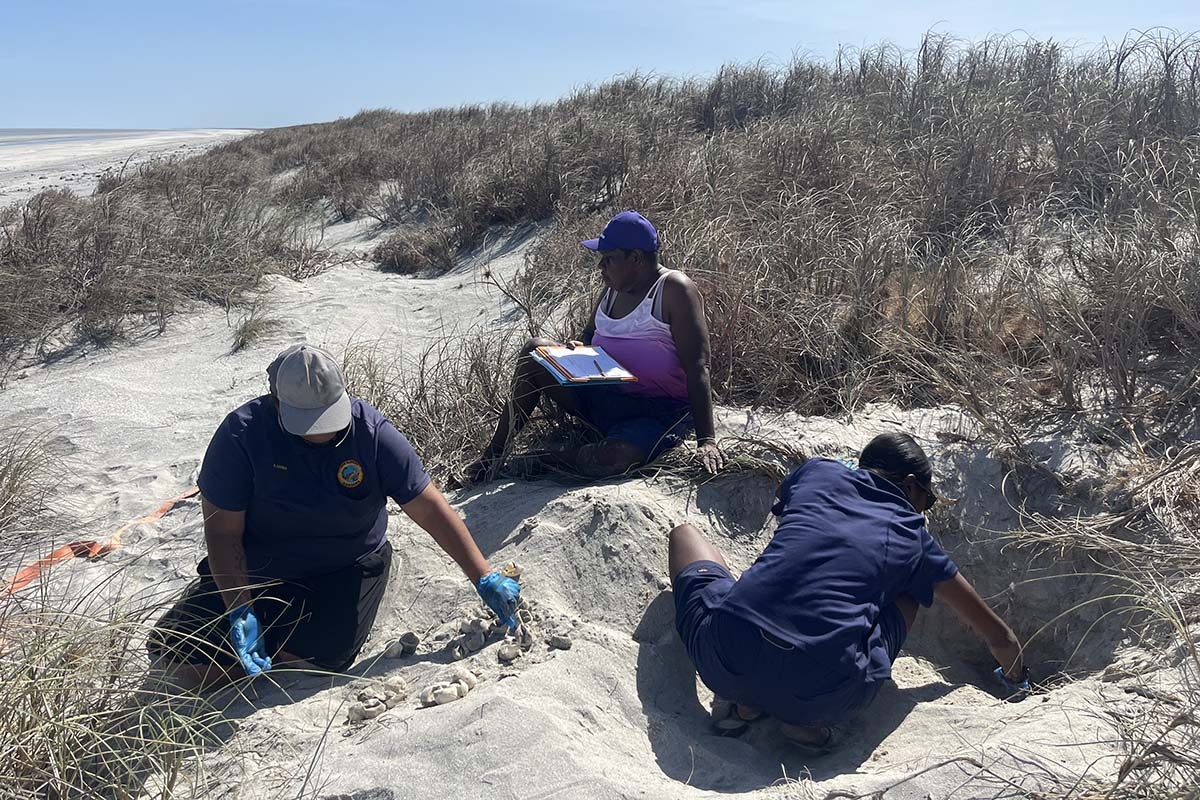
Karajarri Rangers conducting turtle monitoring at Eighty Mile Beach. Photo by Karajarri Traditional Lands Association
Murujuga Aboriginal Corporation
Murujuga Aboriginal Corporation jointly manages Murujuga National Park.
Language key:
M: Mardudhunera
N: Ngarluma
Y: Yindjibarndi
(Some words are common between the languages)
Ngayintharri gumawarni ngurrangga
(We all come together for country)
Wayiba! (Hello). Wanthiwa! (Welcome).
We want to share our story and our wangka (M) / wangga (Y/N) (language) with you. It is a story about our land and our people that reaches back thousands of generations, and forwards into the future. It is a story of endless drive by Ngarda-Ngarli (Aboriginal people) to keep standing strong and caring for Murujuga country today.
Murujuga means ‘hip bone sticking out’ in the Ngarluma language. When we talk about Murujuga, we mean land and sea country, including the Burrup Peninsula and the 42 islands of the Dampier Archipelago. Murujuga is located near the towns of Dampier and Karratha in Western Australia’s Pilbara region.
A living cultural landscape
In the beginning, during the ngurra nyujunggamu (when the world was soft), Manguin (N) / Minkala (Y) (ancestral beings) and the Marrga (creation spirits) moved over the earth. They created the physical world we know today – the land, the sea, the sky, the plants, the animals and finally, the Ngarda-Ngarli. The paths taken by these beings formed rivers, landforms and watercourses. As well as creating the physical world, they created the rules and principals that Ngarda-Ngarli must live by.
For tens of thousands of years, including periods when the landscape differed greatly from today, Aboriginal groups travelled to Murujuga for trade, marriage, kinship, ceremonies, hunting, fishing, and gathering plants and other resources. However, not all areas of Murujuga were open for all Ngarda-Ngarli to use. Some areas were strictly off-limits except during lore business. Other areas were restricted to people of a certain gender. This is still true today. We call these men’s sites or places for men's business, and women’s sites, for women’s business.
Across Murujuga today you can see the evidence of many generations our ancestors living on and caring for country. This evidence includes stone arrangements and other artefacts, shell middens and rock art engravings. We have a deep and spiritual connection to ngurra (country). If ngurra gets sick (damaged, degraded, polluted) we too will become ill and might even die. By protecting ngurra, people are also protected. Everyone is responsible for looking after ngurra, including non-Indigenous people who work or visit Murujuga.
Cultural safety
Murujuga is an ancient and sacred place. When visitors come to Murujuga, we invite them to do cultural awareness training and if people are doing work or research here, we ask that they first seek cultural guidance from Murujuga Aboriginal Corporation (MAC). Some general guidelines for cultural safety on Murujuga include:
Do not:
- remove anything from country, including stones, shells, artefacts or any other items
- climb onto rocks or pass into sacred areas
- photograph or share images of rock art depicting faces or humanoid figures;
- damage Aboriginal sites
- conduct earthworks without the express permission from MAC and the Murujuga Circle of Elders
Murujuga Aboriginal Corporation
Today, five Traditional Owner and Custodial groups – the Ngarluma, Yindjibarndi, Mardudhunera, Yaburara and Wong-Goo-Tt-Oo – come together to care for Murujuga. These groups sit together under the management of MAC.
In 2002, after a long struggle for native title recognition, three contracting parties comprising the Ngarluma-Yindjibarndi, Yaburara-Mardudhunera, and the Wong-Goo-Tt-Oo signed the Burrup and Maitland Industrial Estates Agreement (BMIEA). In doing so, the groups surrendered native title rights and interests over the Burrup in exchange for land entitlements and financial benefits. These benefits included the creation of MAC, which become incorporated in 2006, and the transfer of non-industrial land on the Burrup Peninsula to freehold land vested in MAC.
In 2012, MAC’s Board established a Ranger program and the Circle of Elders to manage Murujuga land and sea country. In 2013, the freehold land on the Burrup was declared as Murujuga National Park. Murujuga National Park now covers 5,134 ha of undeveloped land on the Burrup Peninsula.
World Heritage nomination
With an estimated one to two million images, Murujuga is home to one of the largest, densest and most diverse collections of rock art engravings, or petroglyphs, in the world. Murujuga is the only place on Earth where the story of the people and their changing environment has been continuously recorded through art for more than 50,000 years. These ‘stories from the stones’ of Murujuga are still relevant today and are a key component of living Ngarda-Ngarli culture.
In 2018, after two decades of aspiration by Murujuga Traditional Owners and Custodians to have Ngarda-Ngarli governance at the heart of decision-making on Murujuga, MAC and the WA Government announced they would jointly develop a nomination for World Heritage Listing of the Murujuga Cultural Landscape. In doing so, the Murujuga Circle of Elders and the MAC Board considered that World Heritage Listing would highlight the importance of Murujuga's culture and heritage to the world, thus helping them protect it for future generations. The nomination was submitted by the Australian Government to the UNESCO World Heritage Centre in early 2023. The application for Listing is currently in the evaluation phase.
Following a successful World Heritage application, the WA Government is committed to extending joint management arrangements with MAC to the Dampier Archipelago islands reserve network.
Learn more about Murujuga Aboriginal Corporation at www.murujuga.org.au and follow us on Facebook; LinkedIn; Instagram; YouTube; and the Rangers’ TikTok.

Nganjarli Gorge in Murujuga National Park. Photo by DBCA

Elder Tim Douglas and Ranger Sarah Hicks at Hearson Cove, Murujuga. Photo by Fuzz Digital for Murujuga Aboriginal Corporation

Macropod petroglyph at Nganjarli, Murujuga National Park. Photo by Fuzz Digital for DBCA
Yurriyangem Taam Aboriginal Corporation
The Country in our Yurriyangem Taam National Park features spectacular gorges and art along the Sir John Range and Narrie Range. The river system with its mighty variable flows from the North on Kija Country and downstream through Bunuba and Gooniyandi was recognised for protection to preserve the river as part of the Fitzroy River National Parks.
There is some permanent water along the Martuwarra (Fitzroy) and its tributaries represent our living waters and is integral to our health.
A healthy river system not only means healthy Country but spiritually healthy people and this is our priority.
The rivers, waterholes, plants, animals, and art on Kija Country were created in Ngarangkanni (dreamtime).
It is important to keep the Country alive for people, animals, plants, our spiritual ancestors and dreaming by protecting it from harm.
It is also important that others understand the significance of our Country and places. We want our values to live on and ensure others can visit our lands in a respectful, safe and meaningful way.
Joint Management:
Yurriyangem Taam Aboriginal Corporation jointly manages the Yurriyangem Taam National Park with the Department of Biodiversity, Conservation and Attractions on Kija Country. Through Joint Management the importance of keeping the Fitzroy River healthy is recognised and the protection of our Cultural areas is given priority.
Our partnership strengthens our cultural heritage and values and provides strategic direction for maintaining healthy Country and waterways.
You are welcome to visit our Country, but we ask to have respect for our Country, our Culture and our People.
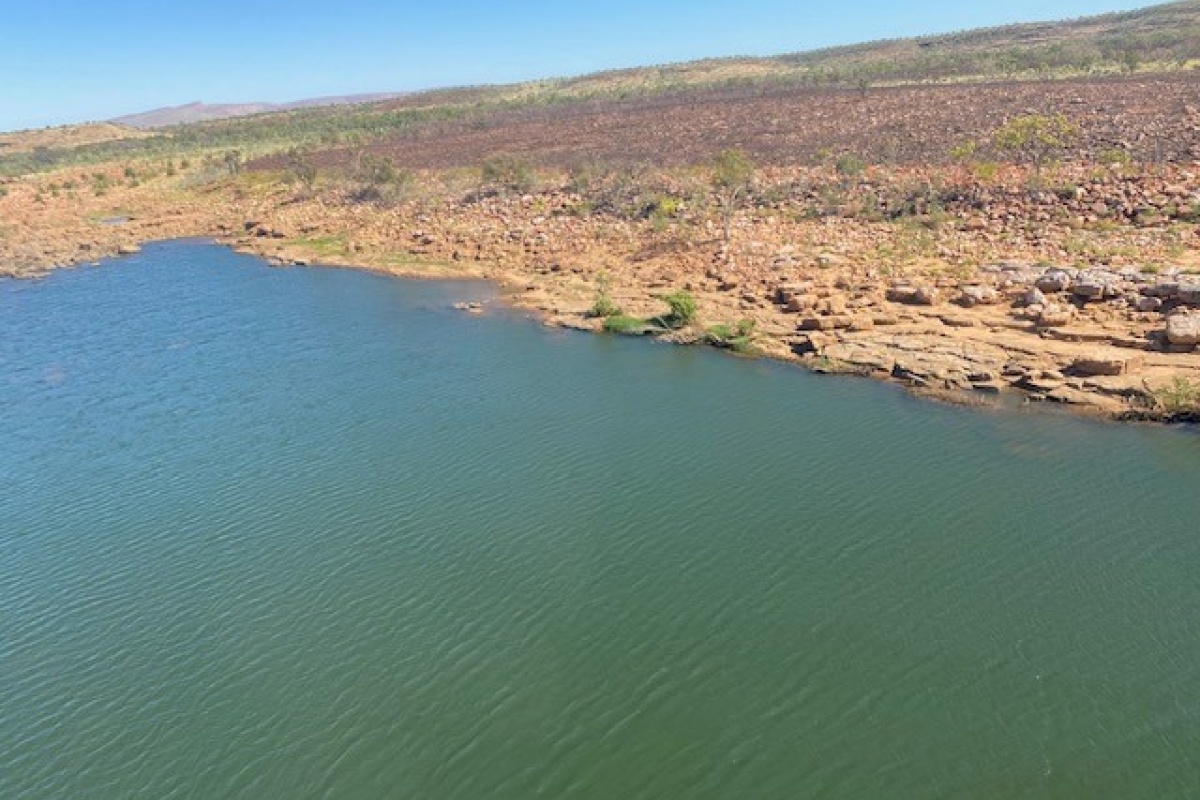
Fitzroy River - Photo: Ann Mills
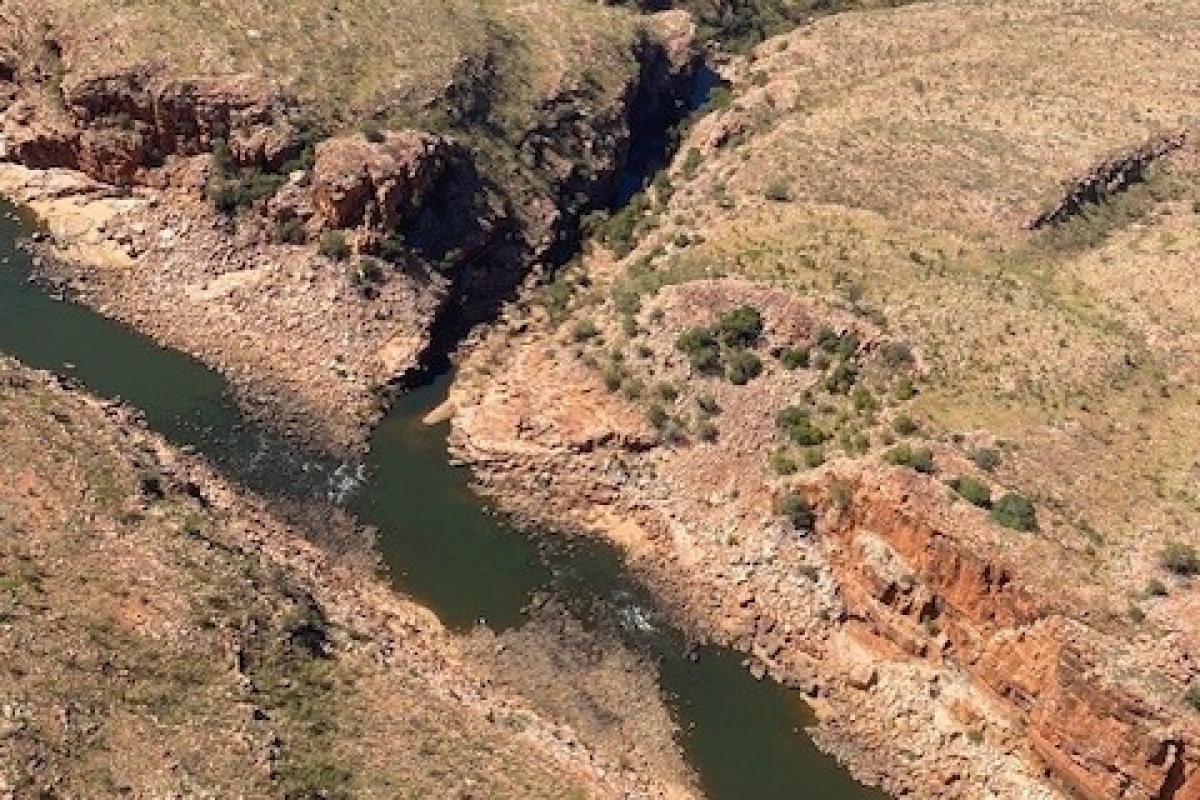
Fitzroy River - Photo: Ann Mills
